
Joe Merino goes 100% ultrafine
The trend towards ever finer gauges is presenting machine producers and system and parts supplier with ever newer challenges across the entire textile value-added chain. From the point of view of a systems supplier this results in the most diverse requirements. The following article provides an overview here, ranging from the properties and potential applications of ultrafine knitted fabrics to sewing styles in line with requirements. Step by

10th October 2010
Knitting Industry
|
Albstadt
 The trend towards ever finer gauges is presenting machine producers and system and parts supplier with ever newer challenges across the entire textile value-added chain. From the point of view of a systems supplier this results in the most diverse requirements. The following article provides an overview here, ranging from the properties and potential applications of ultrafine knitted fabrics to sewing styles in line with requirements.
The trend towards ever finer gauges is presenting machine producers and system and parts supplier with ever newer challenges across the entire textile value-added chain. From the point of view of a systems supplier this results in the most diverse requirements. The following article provides an overview here, ranging from the properties and potential applications of ultrafine knitted fabrics to sewing styles in line with requirements.
Knitwear and knitted fabrics in particular, are distinctive for their diverse areas of application. Processing of very fine yarns, in machines with gauges of E40 and finer, enables the creation of very light knitted materials. Despite this, the fabrics have very high functionality - and are used for applications in underwear, outerwear and also the entire technical textiles sector. The market rollout of ultrafine knitted fabrics has also opened up alternative sales areas for producers of knitted goods that were so far only relevant for woven and warp-knit goods.
Across the entire textile chain, the following aspects have to be taken into consideration:
1. Properties and potential applications of ultrafine knitted fabrics
Ultrafine knitted fabrics have very high loop densities as well as incomparably smooth, homogeneous surfaces. Taking gauge E66 as an example, one square centimetre of surface alone contains an astonishing 2,600 loops.
Here, individual loops can no longer be detected by the human eye. The use of microfibers and Elastan intensifies this effect even more. This enables new optical designs during dyeing and printing, and also gives goods an opaque look despite their low weight. The fabrics are very soft and highly elastic, and hug the body optimally.
Thanks to the especially high degree of wearer comfort and silky feel, ultrafine fabrics are ideal for textiles that are worn right next to the skin, such as underwear, pyjamas or tops. Ultrafine fabrics also have numerous potential applications in hosiery, outerwear - including sportswear and leisurewear - and also swimwear. Other possible uses include medical or technical applications, or industrial filters (as depicted here).
2. Prerequisites for the production of ultrafine fabrics
Production of ultrafine knitted fabrics depends on the capabilities of the knitting machine and the properties of the yarn that is used.
2.1 Knitting element supports
The higher the requirements placed on the gauge, the more important it is to have a precisely manufactured cylinder - because this is the only way to create even loops. Cylinders and sinker rings manufactured with the highest precision, and precise coordination between cylinder and sinker ring or dial respectively, are absolutely essential for a harmonious knitting process and an even loop structure on large circular knitting machines with the finest of gauges. Groz-Beckert guarantees constant precision for all gauges in its product portfolio, which covers almost all diameters up to 60 inches and gauges from E3 to E68.
2.2 Knitting needle
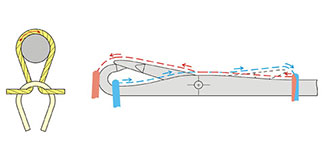
Jolt-free stitch gliding is important for good-looking products and a flawless fabric. This is why geometry and surface in the stitch gliding area of knitting needles are of particular importance wherever constantly precise production of knitted fabrics on large circular knitting machines with ultrafine gauges is involved.
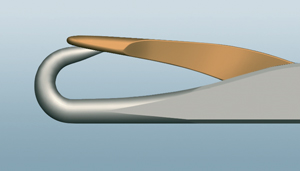
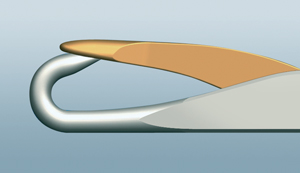
The conical hook provides an enlarged cross-section at the bottom of the hook, and tapers continuously to the tip. Reducing the latch head width also brings about a reduction in the weight of the latch and consequently in the wear caused by latch impact on the hook in the latch seat and on the latch. By reducing wear in the loop forming part of the needle, needle life can be substantially improved.
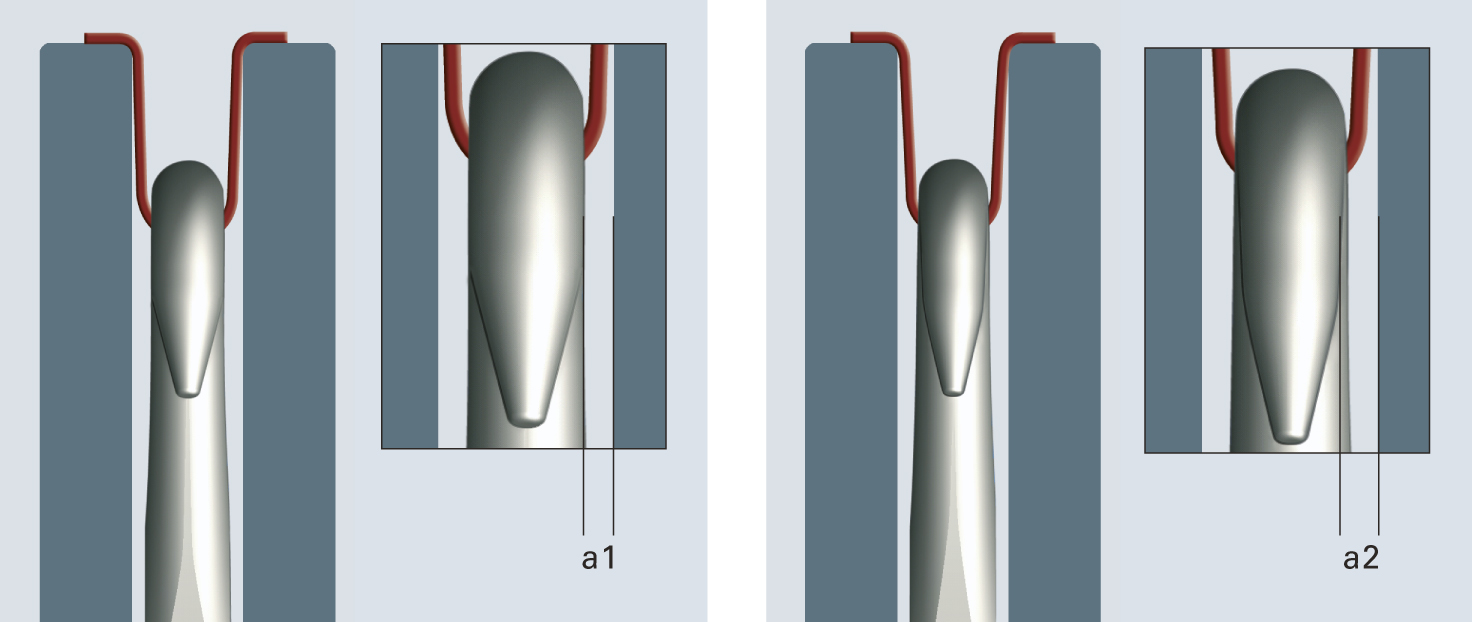
The conical hook permits the needle to be designed for greater clearance between the needle head and sinker than is the case in conventional needles with cylindrical hooks. This allows both fancy yarns and poorer-quality yarns with slubs and knots to be processed without problems to an optimum standard of quality. If, for instance, yarns with pronounced slubs or large knots are knitted, it can happen that the hook is pulled up. This in turn can cause longitudinal streaks or double threads, which can sometimes only be detected after the knitted goods have been finished.
2.3 Holding-down/Knockover sinkers, holding-down devices
Perfect surface quality, edge rounding and geometric precision, high resistance to wear and overall stability: the requirements placed on knitting needles during production of ultrafine knitted fabrics also apply to all other machine elements on circular knitting machines that support the loop formation process, whether sinkers or holding-down components.
2.4 Knitting machine peripherals
In the production of flawless, ultrafine knitted fabrics, the following points need to be taken into consideration:
- Yarn feed: yarn speeds that are even and as low as possible (e.g. positive feeders with magnetic brake rings, smooth-running elastane return pulleys when using elastane)
- Fabric take-down system: constant take-down forces that are as minimal as possible across the entire fabric tube (e.g. fabric take-down controlled by electric motor and adjustable square templet)
- Fabric take-up: Preventing the very sensitive ultrafine knitted fabrics from getting "fold lines" during take-up (various machine manufacturers offer open-width devices)
- Lubrication: precise lubrication of the loop forming elements with suitable oils. With higher machine gauges, optimal use of needle oil is becoming steadily more important. The objective here is sufficient lubrication across all working areas, as well as good washability using minimal detergent at low wash temperatures. To provide customers with tailor made consulting here as well, Groz-Beckert has developed a comprehensive service concept for needle oils.
- Monitoring systems: fabric and needle monitoring systems in order to avoid running errors
- Fiber fly removal: Effective blowing and sucking installations on the knitting machine (1)
2.5 Yarn
The range of practicable yarn thicknesses with spun fibre yarns for ultrafine fabrics in single jersey machines extends from ca. Nm 150/1 to Nm 250/1. (2) In these qualities, however, there is only very limited availability of the fibre raw material. In comparison to conventional yarn thicknesses, production is minimal, and only very few spinning mills are in a position to produce fibre yarns of such fineness. This is why synthetically produced yarns (PA, PES) with yarn thicknesses of 22 - 50 dtex are being used increasingly in ultrafine fabrics. Elastane is used in counts 13 - 22 dtex in a mixture with other fibre materials. The use of microfibers is making it possible to manufacture ultrafine knitted fabrics with special functional properties.
2.6 Finishing
The finishing of ultrafine knitted fabrics requires very special attention because the yarns used - microfibers, for instance - are very sensitive in comparison to conventionally used yarns. This is why finishing processes such as dyeing and finishing should be checked and, if necessary, modified so that any abrasion and ensuing capillary damage can be avoided.
Throughout the entire finishing process, the fabrics have to be low-tension, and treated under low thermal loads. Dyeing, for instance, should only be realised in horizontal jet-dyeing machines. During finishing of fine and ultrafine knitted fabrics, conditioning plays a key role with regard to sew ability.
2.7 Sewing
In industrial sewing, the needle reaches very high speeds. The textile fibres or yarns have to avoid the needle in the penetration zone within the unbelievably short time period of 0.0003 seconds by being displaced by it. During needle penetration, loop threads are powerfully displaced under high friction, which in extreme cases can lead to breakage. Fine stitched goods with defective finishing are very hard to sew without damage. To avoid loop damage during the making up of ultrafine knitted fabrics, the following points have to be borne in mind:
Use of the right needle:
Processing of fine materials without sewing errors sets the sewing needle very high challenges in terms of quality. Guaranteeing processing safety in sewing operations often requires the use of special application needles. Groz-Beckert provides a comprehensive portfolio here.
The thicker the needle, the greater the displacement and the breakage during penetration. This means that a needle that is as thin as possible - count Nm 55, for instance - is required for the processing of ultrafine knitted fabrics.
Choice of suitable needle tip:
For fine and ultrafine knitted fabrics, needles with a slightly rounded tip are the best choice. With fine Interlock fabric the RG tip is recommended, with fine and ultrafine knitted fabric with a proportion of Elast the FFG tip - and the FG tip for knitted fabric with an increased proportion of Elast.

For optimal processing safety the needle tip has to be regularly checked, and exchanged in good time wherever necessary.
Adapting the machine speed:
If irregular seams, faulty stitches and needle breakage occur when using thin needles, the stitching speed has to be adapted to the application. This should only be considered a final option, however.
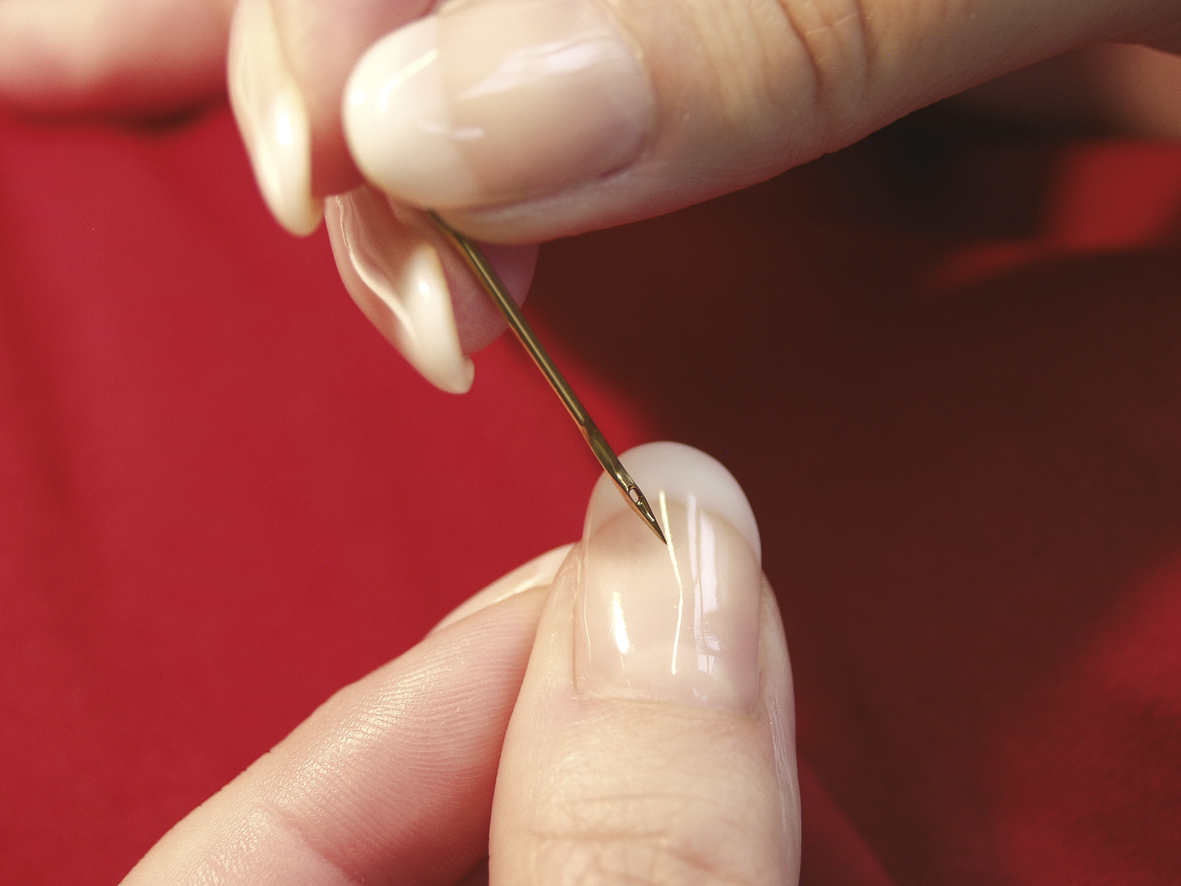 2.8 Special application needle SAN 10
2.8 Special application needle SAN 10
The entire geometry of the SAN 10 needle has been designed especially to master problems during the processing of fine and critical stitched goods, and enables almost problem-free processing at high machine speeds.
In general Groz-Beckert recommends the use of SAN® needles with:
- stitched goods that tend towards material damage
- Extremely sensitive stitched goods that can only be processed at minimal speeds and with the thinnest of needles
Sources
[1] Ultrafine knitted fabrics, Aif-No. 13261, ITV Denkendorf
[2] Heitmann, Uwe: Fine yarns for knitting machines with fine gauges, Melliand Textilberichte, 7-8/2008, 256-257
[3] The sewing of knitted fabric, Amann Service+Technik, Amann & Söhne GmbH & Co.
Article republished with the kind permission of Groz-Beckert KG

Business intelligence for the fibre, textiles and apparel industries: technologies, innovations, markets, investments, trade policy, sourcing, strategy...
Find out more